Research
Research
Why seeing a chiropractor?
Our protocols are evidence based: this means that there is a validated reason behind any type of intervention we use.
If you:
– are tired of living with persistent sciatic pain or lower back discomfort
– are experiencing recurrent migraines and headaches, neck and shoulders pain
– want to improve your health naturally, and are willing to change certain aspects of your current lifestyle
– feel like you are getting nowhere with the continuous use of medication to “kill” pain
– want to perform better, on any level
– live in Dorchester, Poundbury, Weymouth or surrounding areas
Please go ahead and read the following paragraphs. This is not an exhaustive list and its aim is only to present only some of the evidence for chiropractic care.
Research on the effects of chiropractic adjustments is ongoing. However, chiropractic care has gained validity and popularity as an effective, non-invasive approach to treating different musculo-skeletal conditions like sciatica and lower back pain.
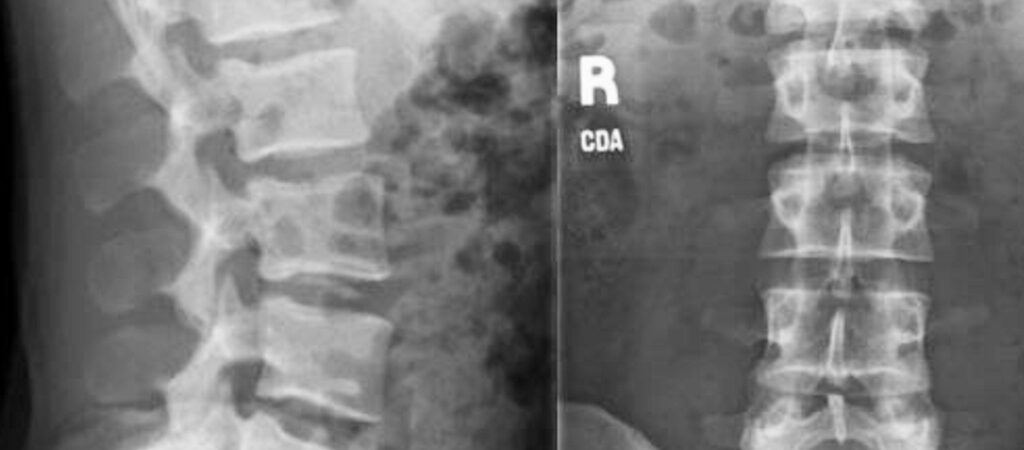
Scientific evidence
Chiropractic care for lower back pain
2004: “In our study population of 0.7 million members who had chiropractic coverage in the medical plan, we estimated
an annual reduction of approximately $16 million as a result of lower utilization of high-cost items.” “This study
provides additional information regarding the economic benefits and utilization patterns associated with systematic
access to chiropractic care.” (Legorreta et al. (2004) Comparative Analysis of Individuals With and Without Chiropractic
Coverage. Arch Int Med 164; 18). PubMed
2007: “Chiropractors using a nonsurgical/nonpharmaceutical approach demonstrated reductions in both clinical and cost
utilization when compared with PCPs using conventional medicine alone.” (Sarnat et al. (2007) Clinical Utilization and
Cost Outcomes From an Integrative Medicine Independent Physician Association.: An Additional 3-Year Update JMPT 30
(5) 263-269). PubMed
2007: “For patients who do not improve with selfcare options, clinicians should consider the addition of
nonpharmacologic therapy with proven benefits-for acute low back pain, spinal manipulation [no other intervention was
considered to have proven benefits!].” (Chou, R. et al. (2007) Diagnosis and treatment of low back pain: A joint clinical
practice guideline from the American College of Physicians and the American Pain Society. Ann Intern Med.; 147:
478-491). PubMed
2008: “All formal government enquiries into chiropractic since the 1970s have found contemporary chiropractic health
care safe, effective, cost-effective and recommended licensure and government funding.” (Chapman-Smith, David LL.B.
The Chiropractic Report. (2008) The Chiropractic Profession: Basic Facts, Independent Evaluations, Common Questions
Answered. Vol 22 (5) pp1-8). SiloTIPS
2010: “Compared to family physician-led usual care, full clinical guidelines-based treatment including chiropractic spinal
manipulative therapy is associated with significantly greater improvement in condition specific functioning.” (Bishop et
al. (2010) The Chiropractic Hospital-based Interventions Research Outcomes (CHIRO) Study: a randomized controlled trial
on the effectiveness of clinical practice guidelines in the medical and chiropractic management of patients with acute
mechanical low back pain. The Spine Journal 10(12): 1055-64). PubMed
2011: “Compared to care from medical doctors and physiotherapists, care from chiropractors during the disability
episode ( “curative”), during the health maintenance care period (main exposure variable, “preventive”), and the
combination of both (curative and preventive) was associated with lower disability recurrence HRs (hazard ratios).”
“Those cases treated by chiropractors had less use of opioids and fewer surgeries.” (Cifuentes et al. (2011) Health
Maintenance Care in Work-Related Low Back Pain and its Association with Disability Recurrence. Journal of Occupational
and Environmental Medicine 53(4): 396-404). PubMed
2011: “Sixty patients, with chronic, nonspecific LBP lasting at least 6 months, were randomized to receive either (1) 12
treatments of sham SMT over a 1-month period, (2) 12 treatments, consisting of SMT over a 1-month period, but no
treatments for the subsequent 9 months, or (3) 12 treatments over a 1-month period, along with “maintenance spinal
manipulation” every 2 weeks for the following 9 months.” “Patients in the second and third groups experienced
significantly lower pain and disability scores than first group at the end of 1-month period (P = 0.0027 and 0.0029,
respectively)..” “However, only the third group that was given spinal manipulations (SM) during the follow-up period
showed more improvement in pain and disability scores at the 10-month evaluation.” “In the non-maintained SMT
group, however, the mean pain and disability scores returned back near to their pretreatment level.” “SMT is effective
for the treatment of chronic nonspecific LBP. To obtain long-term benefit, this study suggests maintenance SM after the
initial intensive manipulative therapy.” (Senna & Machaly (2011) Does Maintained Spinal Manipulation Therapy for
Chronic Nonspecific Low Back Pain Result in Better Long-Term Outcome? SPINE 36 (18) 1427-37). PubMed
2013: “In a subgroup of patients with nonspecific LBP, spinal manipulation was significantly better than nonsteroidal
anti-inflammatory drug diclofenac (Voltaren) and clinically superior to placebo.” (Von Heymann, W. et al. (2013) Spinal
High-Velocity Low Amplitude Manipulation in Acute Nonspecific Low Back Pain: A Double-Blinded Randomized
Controlled Trial in Comparison with Diclofenac [Voltaren] and Placebo. Spine 38 (7): 540-548). PubMed
2014: “Firstly, in comparison to previous reports of limited evidence showing no difference between true and sham
manipulation, the results of this systematic review show moderate to strong evidence for the beneficial effects of
manipulation in comparison to sham manipulation.” “These differences are demonstrated in terms of pain relief,
functional improvement, and overall-health and quality of life improvements in the short-term for all stages of LBP.”
(Hidalgo, et al. (2014). The efficacy of manual therapy and exercise for different stages of non-specific low back pain: an
update of systematic reviews. Journal of Manual and Manipulative Therapy 22(2): 59-74). PubMed
2017: “This systematic review demonstrates that chiropractic may have a favorable effect
on self-reported pain and functional limitations on NSCLBP. However, the results should be interpreted in the context of
the limitations identified, particularly in relation to the heterogeneity in the study characteristics and the low methodological
quality in many of the included studies.” The effectiveness of acupuncture, acupressure and chiropractic interventions
on treatment of chronic nonspecific low back pain in Iran: A systematic review and meta-analysis. Complement Ther Clin Pract 2017
May;27:11-18. doi: 10.1016/j.ctcp.2016.11.012. Epub 2016 Nov 30. PubMed
2018: “There is moderate-quality evidence that manipulation and mobilization are likely to reduce pain and improve function
for patients with chronic low back pain; manipulation appears to produce a larger effect than mobilization. Both therapies appear safe.
Multimodal programs may be a promising option. Manipulation and mobilization for treating chronic low back pain: a systematic
review and meta-analysis. Spine J 2018 May;18(5):866-879. doi: 10.1016/j.spinee.2018.01.013. Epub 2018 Jan 31. PubMed
2020: “Observational study of 1853 chronic low back pain and neck pain patients (74% female) who completed an online questionnaire
at the 3-month follow-up that included Consumer Assessment of Healthcare Providers and Systems (CAHPS) items assessing their experiences
with care”. The positive experiences of patients with chronic back and neck pain are supportive of their use of chiropractic care.
Experiences With Chiropractic Care for Patients With Low Back or Neck Pain, J Patient Exp 2020 Jun;7(3):357-364.
doi: 10.1177/2374373519846022. Epub 2019 May 31. PubMed
2023: “There is uncertainty about the benefits and harms of all the interventions reviewed due to the lack of trials conducted
in patients with chronic nonspecific low back pain without radiculopathy. From the limited trials conducted, nonpharmacological interventions
of acupuncture and spinal manipulation provide safer benefits than pharmacological or invasive interventions.
However, more research is needed.” Benefits and harms of treatments for chronic nonspecific low back pain without
radiculopathy: systematic review and meta-analysis. Spine J 2023 May;23(5):629-641. doi: 10.1016/j.spinee.2022.11.003. Epub 2022 Nov 17. PubMed
Chiropractic care for headaches
2015: “Nearly all types of manual therapy have been shown to elicit a neurophysiological response that is associated with the descending pain
modulation circuit; however, it appears that different types of manual therapy work through different mechanisms. It is crucial that more higher quality
research be performed to better understand these mechanisms, as it can lead to a better understanding of how each therapy can be applied to drive more specific clinical research. National library of medicine
2019: “Spinal manipulation may be an effective therapeutic technique to reduce migraine days and pain/intensity. However, given the limitations
to studies included in this meta-analysis, we consider these results to be preliminary. Methodologically rigorous, large-scale RCTs
are warranted to better inform the evidence base for spinal manipulation as a treatment for migraine.” The Impact of Spinal Manipulation on
Migraine Pain and Disability: A Systematic Review and Meta-AnalysisHeadache, 2019 Apr;59(4):532-542. doi: 10.1111/head.13501. Epub 2019 Mar 14. PubMed
2019: There was a nearly immediate positive response to initial care in headache and neck pain intensity and frequency, which the patient assessed
as integral to her improvement. There was a reported 50% reduction in headache intensity. The average headache pain intensity dropped to 3.5/10
with a range between 2/10 and 4/10. Integrating Chiropractic Care Into the Treatment of Migraine Headaches in a Tertiary Care Hospital: A Case Series.
Glob Adv Health Med. 2019; 8: 2164956119835778. Published online 2019 Mar 28. doi: 10.1177/2164956119835778. National Library of Medicine
Risks
2002: “We conclude that under normal circumstances, a single typical (high-velocity/low-amplitude) SMT thrust is very unlikely to mechanically
disrupt the VA. (JManipulative Physiol Ther 2002;25:504-10). INTERNAL FORCES SUSTAINED BY THE VERTEBRAL ARTERY DURING
SPINAL MANIPULATIVE THERAPY. Sonometrics
2008: “VBA stroke is a very rare event in the population. The increased risks of VBA stroke associated with chiropractic and PCP visits is likely due
to patients with headache and neck pain from VBA dissection seeking care before their stroke. We found no evidence of excess risk of VBA stroke
associated chiropractic care compared to primary care.” Risk of Vertebrobasilar Stroke and Chiropractic Care Results of a Population-Based Case-Control
and Case-Crossover Study. Eur Spine J, 2008. NCBI
2015: “We found no significant association between exposure to chiropractic care and the risk of VBA stroke. We conclude that manipulation
is an unlikely cause of VBA stroke. The positive association between PCP visits and VBA stroke is most likely due to patient decisions to seek care for the symptoms (headache and neck pain) of arterial dissection. Chiropractic care and the risk of vertebrobasilar stroke: results of a case–control study in U.S. commercial and Medicare Advantage populations. Kosloff et al. Chiropractic & Manual Therapies (2015) 23:19. NCBI
2022: “Among Medicare beneficiaries aged 65 and older who received cervical spinal manipulation, the risk of cervical artery dissection is no greater
than that among control groups”. Whedon, J.M., Petersen, C.L., Li, Z. et al. Association between cervical artery dissection and spinal manipulative therapy –a medicare claims analysis. BMC Geriatr 22, 917 (2022). https://doi.org/10.1186/s12877-022-03495-5. BMC geriatrics
Vitamin D
2003: Subjects were treated for 3 months with 5000 IU/day to 10,000 IU/day of vitamin D3 (patients >50 kg received the larger dose). There were no episodes
of hypercalcemia reported, and pain symptoms were relieved in 95% of the patients. (Al Faraj S, Al Mutairi K. Vitamin D deficiency and chronic
low back pain in Saudi Arabia. Spine 2003;28:177-179). PubMed
2007: “The active 1,25(OH)2D form of vitamin D is a potent modulator of inflammation, and may play a role in shutting off chronic inflammatory responses.” (Pedersen LB, et al. 1,25-dihydroxyvitamin D3 reverses experimental autoimmune encephalomyelitis by inhibiting chemokine synthesis and monocyte trafficking. J Neurosci Res 2007;85:2480-2490). PubMed
2007: In a 3 year trial taking 800 IU/day of Vitamin D reduced the incidence of colds and flu by 70%. In the group taking 2000 IU/day the
incidence of colds and flu was reduced by almost 100% (only 1 of 104 subjects developed cold or flu). (Alogia, J. et al. Epidemic Influenza and Vitamin D. Epidemiology and Infection 2007, Vol 135 (7) pp. 1095-1098). PubMed
2008: “Some researchers have found this (vitamin D deficiency) to occur in up to 85% of chronic musculoskeletal pain cases, especially those involving the lower back.” (Stewart Leavitt, Ph.D. Vitamin D – A Neglected ‘Analgesic’ for Chronic Musculoskeletal Pain. Pain Treatment Topics June 2008). PubMed
2008: “In the research investigations to date, patients found to have deficient 25(OH)D (Vitamin D) concentrations had been variously diagnosed with fibromyalgia syndrome, hyperesthesia, rheumatic disorders, osteoarthritis, back pain, bone and joint pain, muscle weakness, and other chronic somatic complaints.” (Stewart Leavitt, Ph.D. Vitamin D – A Neglected ‘Analgesic’ for Chronic Musculoskeletal Pain. Pain Treatment Topics June 2008). PubMed
2008: Research indicates that vitamin D supplementation modulates or decreases pro-inflammatory cytokines (e.g. C-reactive protein, interleukin 6 and 12, and tumor necrosis factor-alpha) while increasing anti-inflammatory cytokines (e.g. interleukin-10). Clinical investigators have further suggested that vitamin D may help to moderate painful chronic inflammatory autoimmune conditions that are influenced by excessive cytokine activity, such as inflammatory bowel
disease and Crohn’s disease. (Boxer RS, Dauser RA, Walsh SJ, et al. The association between vitamin D and inflammation with the 6-minute walk and frailty in patients with heart failure. J Am Geriatr Soc. 2008;56:454-461). PubMed
2009: “Several randomized controlled trials in older adults found that vitamin D improves various parameters of neuromuscular functioning, including balance, muscle strength, and reaction time… .” “Another test of the theory are interventional studies in reducing falls, assuming falls are failures of athletic performance. Bischoff-Ferrari et al. recently reviewed that literature and concluded that vitamin D, even in relatively low doses (800 IU/day), reduces falls in the elderly.” (Cannell et al. (2009) Athletic Performance and Vitamin D. Medicine and Science in Sports and Exercise. 41 (5).
2014: “High serum vitamin D was associated with lower mortality from breast cancer.” “Patients with the highest concentration of Vitamin D had approximately half the fatality rate compared to those with the lowest concentration.” (Mohr SB et al. Meta-analysis of Vitamin D sufficiency for improving survival of patients with breast cancer. Anticancer Research. 2014;34:1163-1166). PubMed
“In an earlier study, patients with clinical depression were randomized to receive vitamin D3 supplementation or placebo.
Those patients administered vitamin D had significantly enhanced mood and a reduction in negative-affect symptoms.”
(Stewart Leavitt, Ph.D. Vitamin D – A Neglected ‘Analgesic’ for Chronic Musculoskeletal Pain. Pain Treatment Topics June 2008). NCBI
The link between breathing and lower back pain / sciatic pain
Structural link:
2012: “Patients with chronic low back pain appear to have both abnormal position and a steeper slope of the diaphragm, which may contribute to the
etiology of the disorder.” Postural function of the diaphragm in persons with and without chronic low back pain. J Orthop Sports Phys Ther 2012 Apr;42(4):352-62.
PubMed
2013: “Patients with chronic lower back pain exhibit greater diaphragm fatigability”. Greater diaphragm fatigability in individuals with recurrent low back pain.
Respir Physiol Neurobiol 2013 Aug 15;188(2):119-23. doi: 10.1016/j.resp.2013.05.028. Epub 2013 May 31. PubMed
2016: Development of chronic low back pain may be associated with changes in control of the trunk muscles. Control of the trunk is dependent on activity of muscles such as the diaphragm transversus abdominis and pelvic floor (Hodges et al. 2002) and reduced or imbalanced activity of these muscles has been argued to impair mechanical support of the spine. The effects of forced breathing exercise on the lumbar stabilization in chronic low back pain patients. J Phys Ther Sci 2016 Dec;28(12):3380-3383. PubMed
Kim et al. (2013) showed how strengthening the deep abdominal muscles through breathing is an effective way to increase lumbar stabilization; also, Hodges et al. (2005) reported that activity of respiratory muscles is a significant factor affecting spinal stabilization. Hruska (1997) proposed the existence of a connection between thoracic dominant breathing patterns and hypertonicity of the accessory muscles of breathing, which in turn prevents the diaphragm to return to its natural position.
2018: “Through ultrasound imaging, the mobility of the diaphragm has been found to be significantly lower in chronic low back pain patients (Mohan et al. 2018)
Functional link
2014: “Individuals displaying breathing pattern disorders were significantly more likely to have a lower score on the FMS, showing that inefficient breathing could lead to poor motor control, muscular imbalance and physiological changes capable of alter movement. Breathing pattern disorders and functional movement
Int J Sports Phys The 2014 Feb;9(1):28-39. PubMed
Neurological link
For a comprehensive review on the effects of breathing on the autonomic nervous system, on the cardiovascular system and on pain perception,
Russo et al (2017). PubMed
The effects of a lumbar adjustment on sciatica
2021: “Overall, the data reviewed indicate that SMT can be considered an effective intervention for the management of sciatica”. NIH
2021: “Sufficient evidence suggest that SMT provides similar outcomes to recommended interventions, for pain relief and improvement of functional status. SMT would appear to be a good option for the treatment of chronic LBP.” Science Direct
ALIVE BLOG
A collection of thought-provoking articles
Alive Chiropractic Blog: a treasure trove of valuable insights and information on holistic wellness, chiropractic care, and the pursuit of a healthier lifestyle.
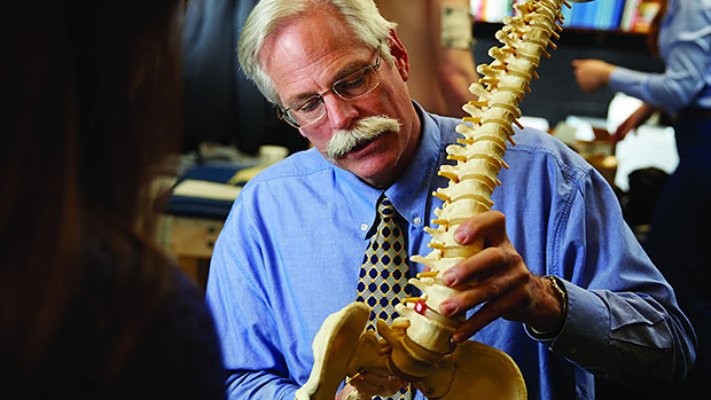
Stuart McGill: building a strong and resilient spine
In the world of strength and conditioning, Stuart McGill is a renowned figure who has dedicated his career to understanding the mechanics of the human spine and developing strategies to enhance its strength and resilience.
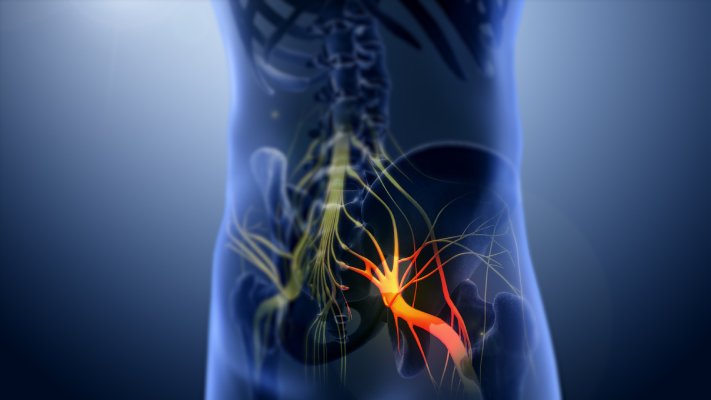
Understanding sciatica: causes, symptoms, and effective relief strategies
Sciatica is a common condition that affects millions of people worldwide. It is characterized by pain that radiates along the path of the sciatic nerve, which is the longest nerve in the human body. The sciatic nerve runs from the lower back, through the buttocks, and down the back of each leg.

The Vitality of Vitamin D Supplementation for UK Residents
Living in the United Kingdom brings its fair share of cloudy and rainy days, which can sometimes limit exposure to natural sunlight—the primary source of vitamin D. This essential nutrient plays a crucial role in maintaining our overall health and well-being.

5 delicious breakfast ideas to avoid insulin spikes and promote balanced energy
A healthy and balanced breakfast is the perfect way to kickstart your day. For individuals looking to maintain stable blood sugar levels and avoid insulin spikes, it's essential to choose foods that are low on the glycemic index (GI). The glycemic index measures how quickly a particular food raises blood sugar levels.

5 Outstanding benefits of body weight squats
Body weight squat exercises are a popular and effective form of resistance training that utilize the body's own weight to strengthen and tone the lower body muscles.
This exercise, often considered a foundational movement pattern, has numerous and proved benefits.

Why does exercise makes me feel generally happier? The science behind physical activity
When we engage in physical activity, our brains undergo a remarkable transformation, releasing a cocktail of chemicals that can uplift our mood, enhance our confidence, and reduce anxiety and stress.
A collection of informative and engaging videos that offer visual insights into the world of chiropractic care. Visual content is a powerful tool for education and empowerment, allowing you to deepen your understanding of chiropractic principles, techniques, and the benefits of maintaining a healthy spine.

Chiropractic techniques
Chronic lower back pain is one of the most common musculoskeletal conditions causing disability and absence from work worldwide.
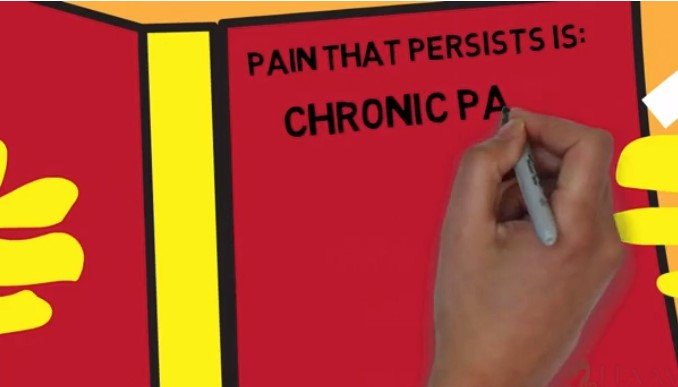
What is pain?
Sometimes, neck pain can be accompanied by radiating pain towards the shoulder blade or – in some cases – towards the arms.
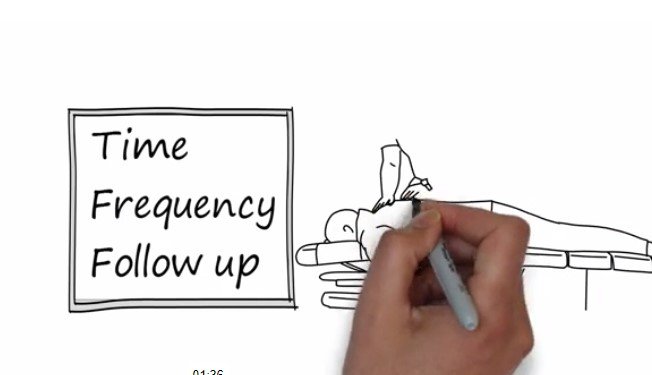
How often should I see my chiropractor?
If you suffer from frequent headaches or migraines, chiropractic care can provide effective relief.
Alive Chiropractic Poundbury
1C Crown gate square DT1 3EJ
Poundbury, Dorchester
Tel. 01305602314
Mob. 07845096314
